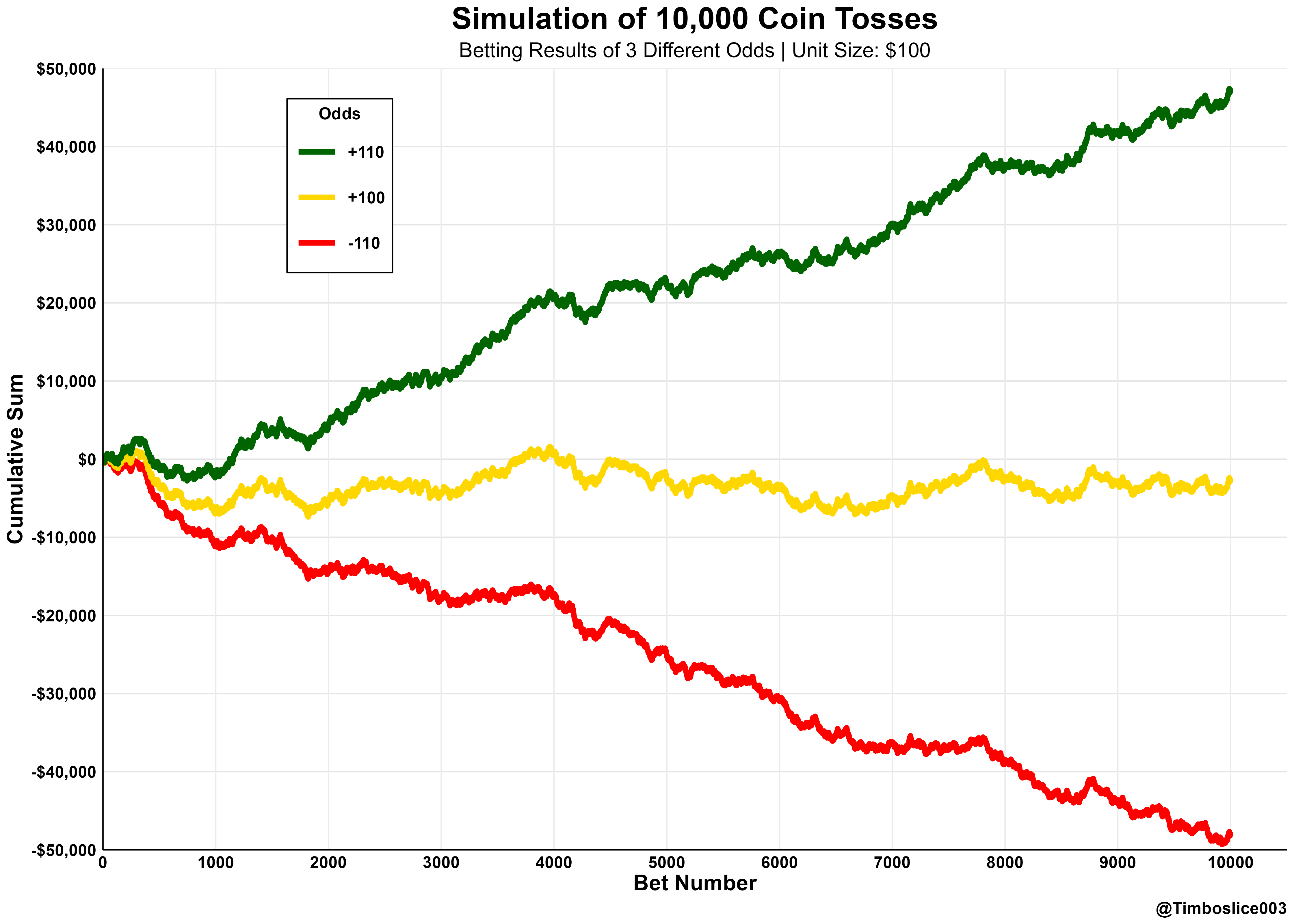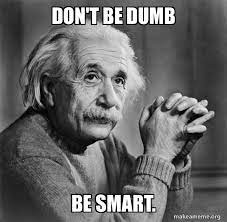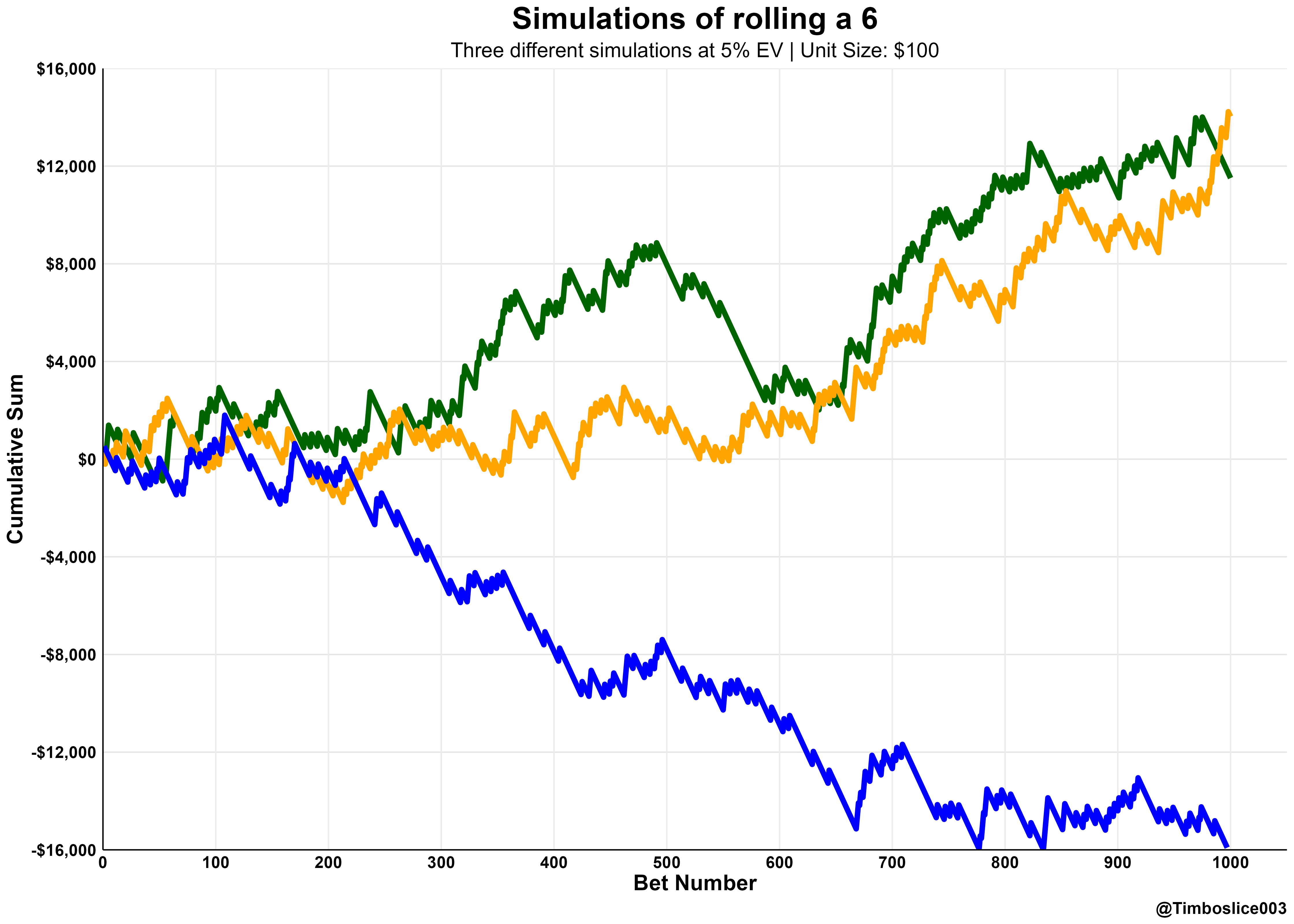What +EV is not
First and foremost, it is important to note what Positive Expected Value (+EV) is NOT. This strategy is not a get rich quick scheme, it is not a ticket to quit your day job, and while it can be done with little effort, it is not entirely passive income. Very few people have the skillset, bankroll, and determination to make a full career out of sports betting. Many more have failed trying. Most importantly, while improbable, you can still lose money. You will assuredly having losing streaks. Sports bet at your own risk and within your own means.
Sports betting background
Sports Books are incredibly efficient at what they do at a macro level. According to the American Gaming Association ,"Nationwide sports betting revenue grew by 44.5 percent year-over-year in 2023, increasing to $10.92 billion from $7.56 billion in 2022."

Long story short, they know what they are doing......most of the time. Even when they are not perfect, the house advantage they hold, also know as the vig, gives them the flexibility to be imperfect.
The "Vig"
Yeah it's a funny word but it is one of the most important aspects of any profitable sports betting strategy. Let's say Peter and Paul want to wager on a coin flip. They each put $10 down and the winner gets $20. This is an intuitive scenario that everyone understands. Now, let's say Mark comes in and wants to organize the coin flipping. Everyone can come in and choose heads or tails and he will flip the coin. The player must put down $11 and they will be returned $21 if they win. (This is the common -110 you will see on spreads for many sports.) Over the course of time, the heads and tails will even out. Well, in this situation, Mark's customers can actually win at a rate of 52.38% and he will still not lose any money. Imagine you played Mark's game 100 times and got a little lucky and won 52/100 times. This means you wagered $1,100 and were returned $1,092. So despite winning more often than losing on an event that is a 50-50 chance, you actually still lost money. Welcome to Sports Betting! Don't worry, there is still hope, because while at large, sports books are great at setting lines, when you get down to the individual lines on individual books, there are opportunities to find the inefficiencies. And that's where we come in.

What is EV
Expected value is exactly what it sounds like. It is the value the bet is expected to return based on the odds and the probability of success.
All you have to do is multiply the profit by the probability of success.
Then you subtract the wager amount multiplied by the probability of losing.

As an example, we will use a coin toss with three different odds given all using a $100 bet.
Odds: -110
- Wager: $100
- Profit: $100 * (100/110) = $90.91
- Probability of Success= 50% or 0.5

Odds: +100 (Even)
- - Wager: $100
- - Profit: $100 * (100/100) = $100
- - Probability of Success= 50% or 0.5

Odds: +110
- Wager: $100
- Profit: $100 * (110/100) = $110
- Probability of Success= 50% or 0.5

You can also divide the EV by the wager to get it into a percentage. This way the EV can relate to bettors of all wager amounts.
With a $100 wager, the above scenarios would be -4.55%, 0.00%, and 5.00% EV, respectively. What this tells us is if you wager on a coin toss
at -110 odds with a fair coin, you would expect to lose -4.55% of your wager. Now you can only lose $100 or win $90.91 in one instance. Over time,
the results will even out to that -4.55% EV. The same goes for +100. While you can only win or lose $100 each coin flip, over time it will even out.
Lastly, at +110, you can either win $110 or lose $100, and over time the 5.00% EV will reveal itself. This may not sound like a huge difference, but it can add up drastically.
Here is what simulating 10,000 coin flips at each of the odds.

To be extremely clear on how important this chart is to being profitable, this is not three different simulations of coin tosses, but
the same 10,000 coin flips with the same results. The bettor won 48.87% of the tosses. Only the odds the wager
was placed at was different. Over the course of 10,000 bets, this is a net difference of nearly $100,000.
Getting the best line available to you as a sports bettor is arguably the most essential part of staying profitable.
The bets you win are only part of the equation, as the odds you get are just as important. Ensuring you are betting
above the fair value of a bet is a necessity.
Fair Value
Fair value is essentially the break even point for a wager. It is the odds at which you'd expect to break even
over the course of many, many bets. For the coin toss example, it’s very easy to find the fair value since it
is a 50-50 outcome, or +100.
It can be a little more difficult in practice but there are plenty of calculators available online.
The process is very simple though. Find the market prices, find the fair value, and determine your EV
with the odds given. Let’s run through an example. Devin Booker (#RallyTheValley) over 25.5 points is
available at +115 on DraftKings and his under is at -135. FanDuel, Pinnacle, and ESPN all
have his 25.5 point line at -105 for the over and -120 for the under. The "market" fair value can be calculated from the
odds given on those books. You can learn about the calculation of finding the fair value
here
,and you can find the link to the calculator at the bottom of this page,
but here is the fair value for this bet.

Take a moment to digest this graphic. It's ok if you have no idea what most of it means. As you can see, since the fair value is only +106,
this is a +EV bet at +115. With a 4.1% +EV bet, we’d expect to return $4.10 per $100 wagered on a bet like this.
You probably notice the recommendation, or "Kelly Wager" at the bottom. Let’s dive into that. (Note: If this is your first time seeing something like this, ignore all the extra information for now.
While not discussed in this article, there are many resources online that discuss market juice,
free bet conversion, and many other sports betting topics.)
Bankroll management
Using the correct process to determine how much to wager on a given bet is a valued step because it can
prevent one bad losing streak from emptying your accounts. On the other hand, it gives you a reason
to smash a bet if the +EV warrants it. Since I’ve started sports betting, I’ve seen the term "bankroll"
defined a few ways but my personal favorite for beginners is the amount of money you could lose without
it having a true impact on your life. It is your decision if and when you'd like to increase/decrease
your bankroll, but be responsible.
 Once you have defined your bankroll, we can define a unit as 1% of your bankroll. For easy math, we’ll
say you have a bankroll of $1000, which gives you a unit size of $10.
The Kelly Criterion
is a mathematical approach to maximizing profit. The link explains it in more detail, but essentially there are two key points to it:
Once you have defined your bankroll, we can define a unit as 1% of your bankroll. For easy math, we’ll
say you have a bankroll of $1000, which gives you a unit size of $10.
The Kelly Criterion
is a mathematical approach to maximizing profit. The link explains it in more detail, but essentially there are two key points to it:
- Higher +EV = Higher wager
- Higher odds = Lower wager
So in the above Devin Booker example, the recommendation is to wager 0.83 units QK, or $8.30. QK stands for Quarter-Kelly. The Kelly Criterion can be very aggressive, so the most common strategy I have seen is to bet 25% of the Kelly recommendation. Say you keep winning and your bankroll grows to $2000, well then this bet would have a recommendation of $16.60. If you hit a cold spell and lower your bankroll to $500, the recommendation would then be to wager $4.15, and so on. The Quarter Kelly Criterion is a good strategy to mitigate risk while still allowing for a high ceiling. No matter how good a wager may seem it could always lose. Even if there was a bet with a fair value of +200 and you could bet it at +1000, there is still a 66.67% chance it will lose. Never forget that.
Variance
Ahhhh your best friend and your worst enemy bundled into one. Look back up at the coin toss simulation chart
and notice the cold streaks. This is for a 50-50 event. It can be more drastic as the odds increase.
Below is 3 different simulations again with 5% of +EV but the odds are +530. This simulation would be the
equivalent to betting on a dice roll landing on a 6 (1/6 chance, 16.67% hit rate, or fair value of +500).

Streaks will happen to you, even if you are doing everything right. The blue simulation was incredibly unlucky, but
this type of scenario is possible. In this simulation, the bettor was betting a full unit ($100) on each wager. The QK
amount would only have been about a quarter of a unit ($25), drastically reducing the losses in the cold streak.
Possessing a proper bankroll and risk mitigation strategy is a crucial skill for any sports bettor.
Referrals
Here are some recommended Twitter accounts I think are great for beginners. I do not receive any benefits of you clicking on the links
or joining their paid discords. The links only take you to their main twitter feed to allow for you to look into accounts I found
helpful when I was first starting.
The Promo Guy
- This was the first ever +EV account I followed based on a recommendation. TPG actually wrote a similar article I would also recommend checking out. While he does have a discord, he posts many free plays on Twitter. However, the odds the bets are available at are changed very fast when the books realize what is going on.
- -My current favorite discord. When you join their discord, they have numerous tutorials and guides that walk you through
everything you need to know about +EV betting.
Calculator
- - A basic sports betting calculator with walk-through guides on how to properly use it for +EV betting.
Used for the Devin Booker example.
You have any further questions or want to talk about sports betting? Let me know on twitter @ Timboslice003. Link to my bio below!